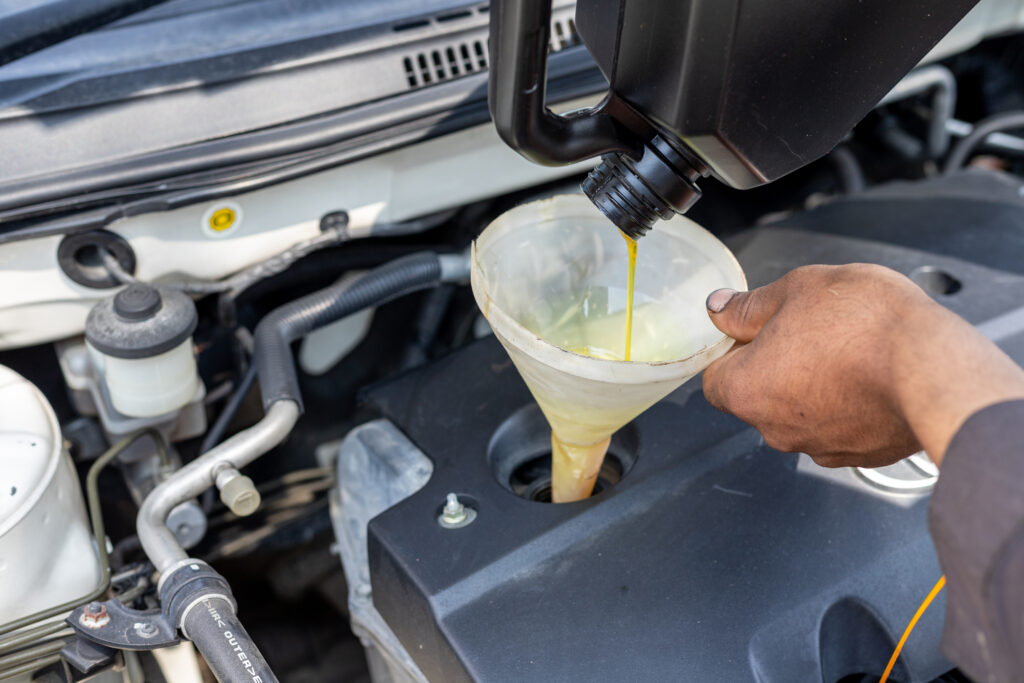Owning a car comes with quite a few expenses, but there are ways to cut costs without risk of blowing a gasket or getting stuck on the side of the road.
One way is doing some of the simpler maintenance tasks yourself. This can save you money, keep your car in good running condition, and avoid expensive repairs down the road.
Here are a few examples of car maintenance you can do yourself, even if you’re not a mechanical genius.
1. Regular oil changes
One of the simplest but most important maintenance jobs is changing your car’s oil. Regular oil changes help lubricate the engine, and that keeps it running smoothly and efficiently. Save money by doing it yourself and get bragging rights. To make sure you have the tools you need for your car, including an oil filter wrench and a drain pan, and follow your car’s owner’s manual for the right oil type and capacity. You can also get some very good help from YouTube videos—search to find one that will walk you through an oil change for the car you have.
2. Air filter replacement
A clean air filter is important for getting the best engine performance and fuel efficiency. Check your air filter regularly, and if it’s dirty, replace it. Most air filters are easy to get to and can be changed by someone who is not a trained mechanic. This simple task can improve your car’s gas mileage and extend the life of your engine.
3. Tire maintenance
Proper tire maintenance not only saves you money but is also key to your car’s safety and handling. Regularly check tire pressure and make sure it matches the recommended tire pressure specified in your car’s manual (you can usually find them on your driver’s side door jamb). Underinflated or overinflated tires can lead to uneven wear and decreased fuel efficiency.
You’ll also want to rotate your tires regularly to help them wear evenly, which will make them last longer. Also be sure to inspect your tires regularly for signs of damage or wear, and replace them if they need it.
4. Brake inspection and pad replacement
Stopping is even more important than going when it comes to cars and avoiding fiery crashes. Inspect your brake pads for wear, and replace them if they’re too thin. This straightforward task is easy to do with basic tools and a little know-how (which you can get from YouTube or websites dedicated to your car’s make and model. Doing it yourself can mean saving significant money on labor costs.
5. Battery
A dead battery is a common car problem that is easy to avoid with proper care. Check the battery terminals periodically for corrosion and clean them if necessary. Make sure your battery is securely mounted, and if it’s more than three years old, it’s a good idea to have it tested or replaced preemptively to avoid getting stranded unexpectedly. (The good news is, batteries are pretty inexpensive, and extremely easy to replace!)
6. Fluid checks and top-ups
Various fluids keep your car running (and stopping) smoothly, including coolant, brake fluid, power steering fluid, and windshield washer fluid. Regularly check these fluids and top them up if they run low. This will help maintain optimal performance and prevent costly damage to your car’s components.
7. Spark plug replacement
Spark plugs are a key part of the combustion process within your engine. Over time, they can become fouled or worn, and that leads to your engine running rough, and also hurts your gas mileage. Check your car’s manual for the recommended replacement interval and be sure to replace your spark plugs on that schedule. It requires minimal tools and can make a noticeable difference in your car’s performance.
The bottom line By dedicating a little time to car maintenance you can do yourself, you can save money on expensive repairs and keep your car in top condition. From regular oil changes to tire rotations and brake inspections, these simple tasks are things you can do with basic tools and a little effort and patience. You’ll save money, and also develop a better understanding of how your car works.









